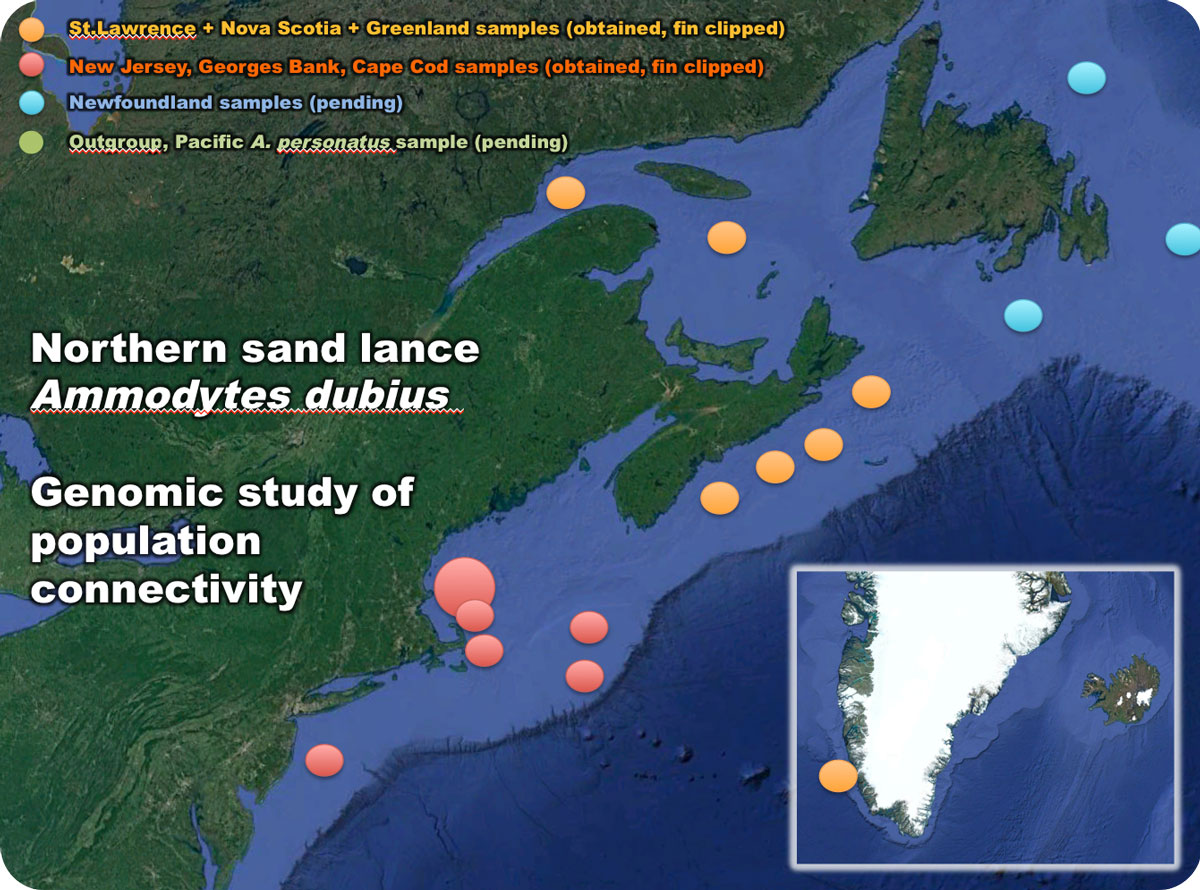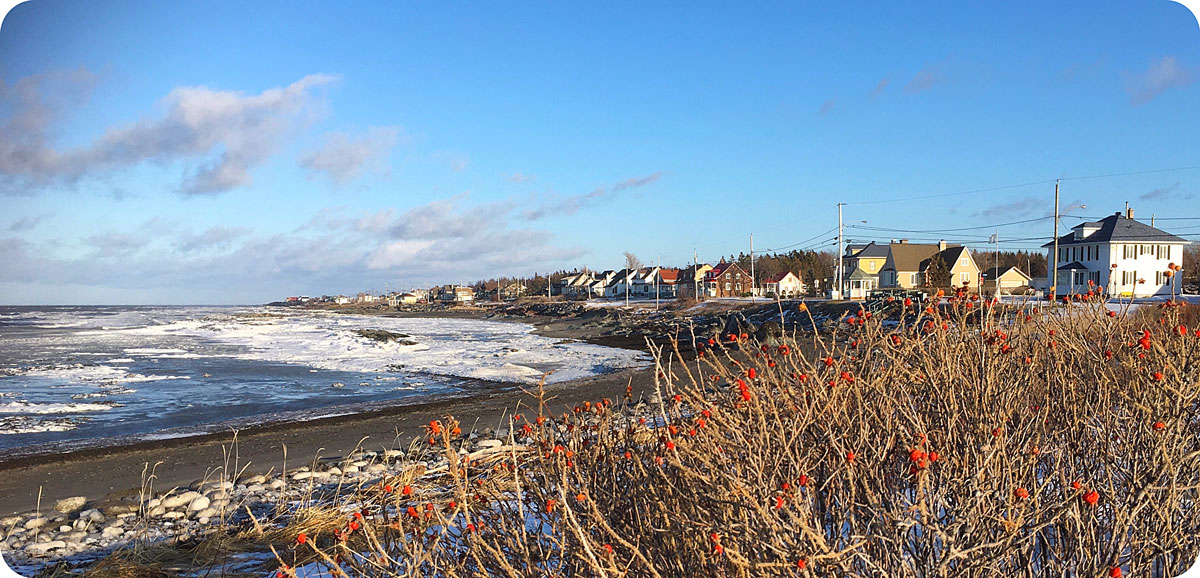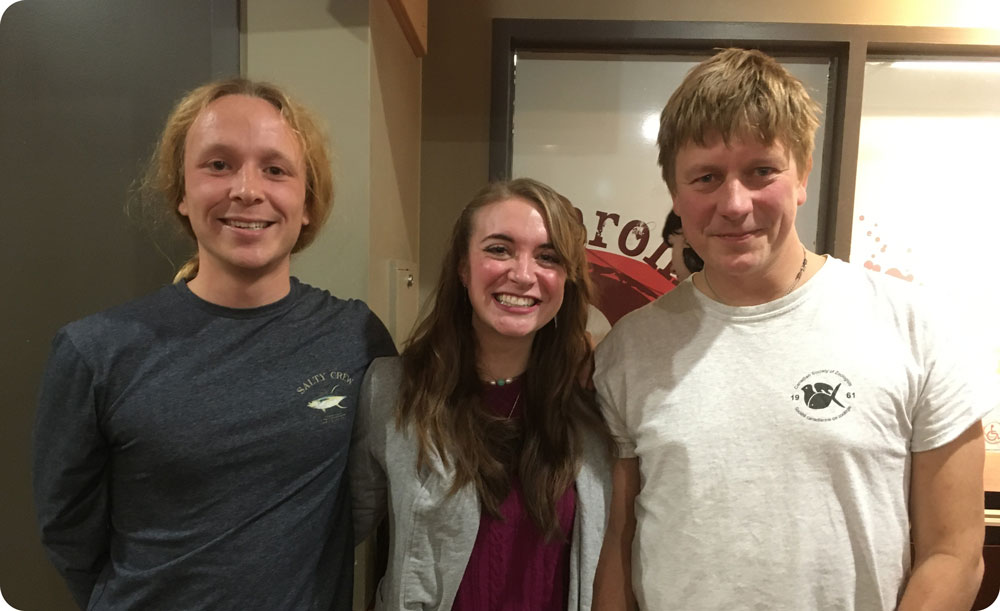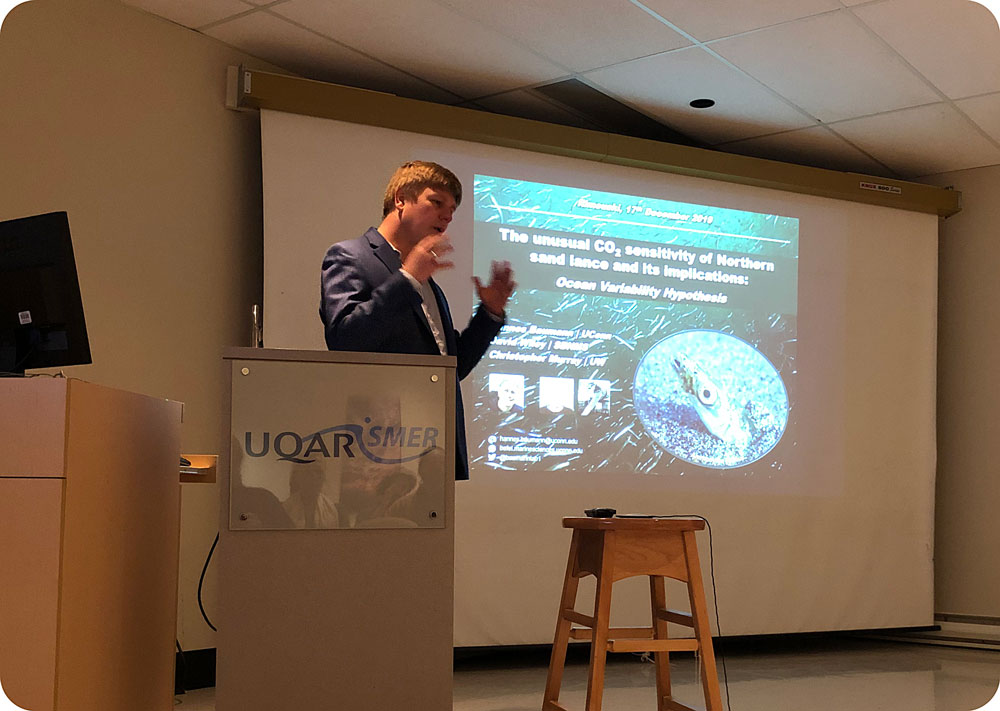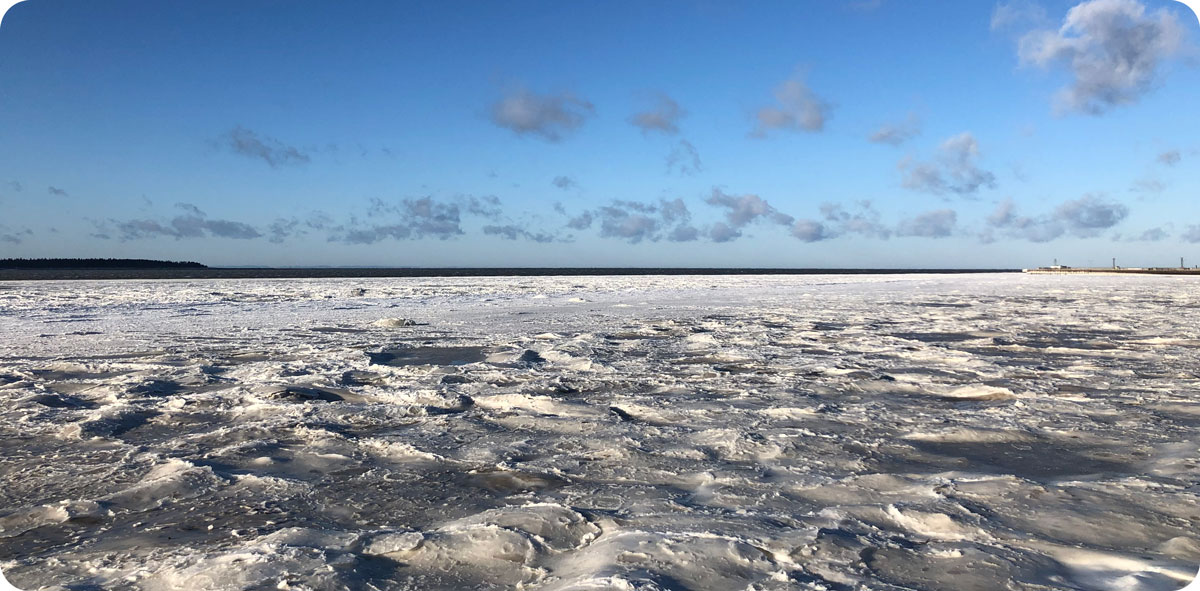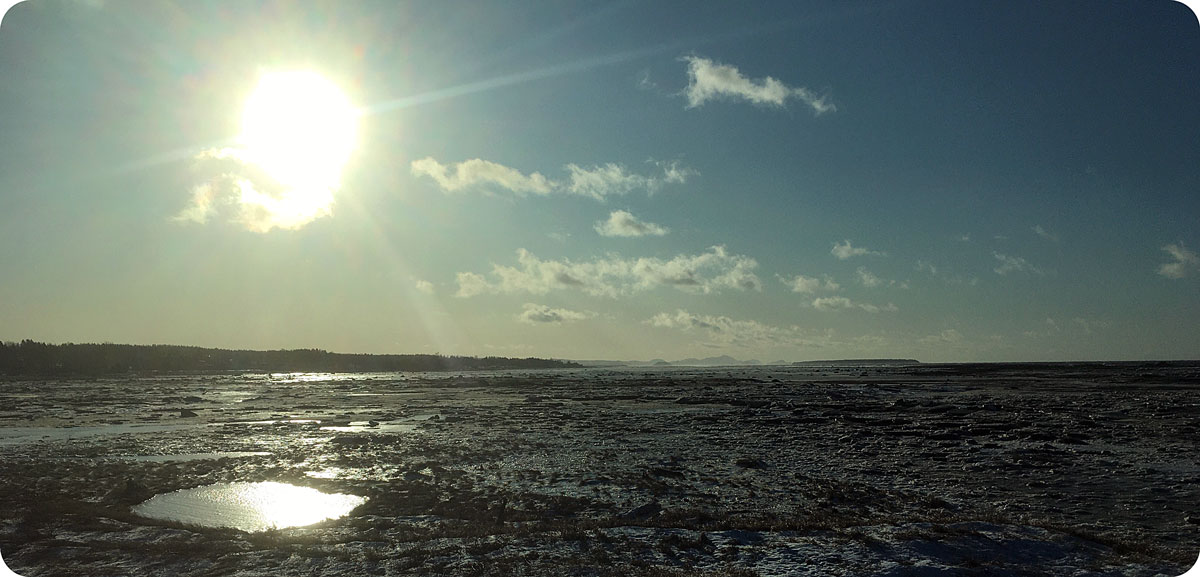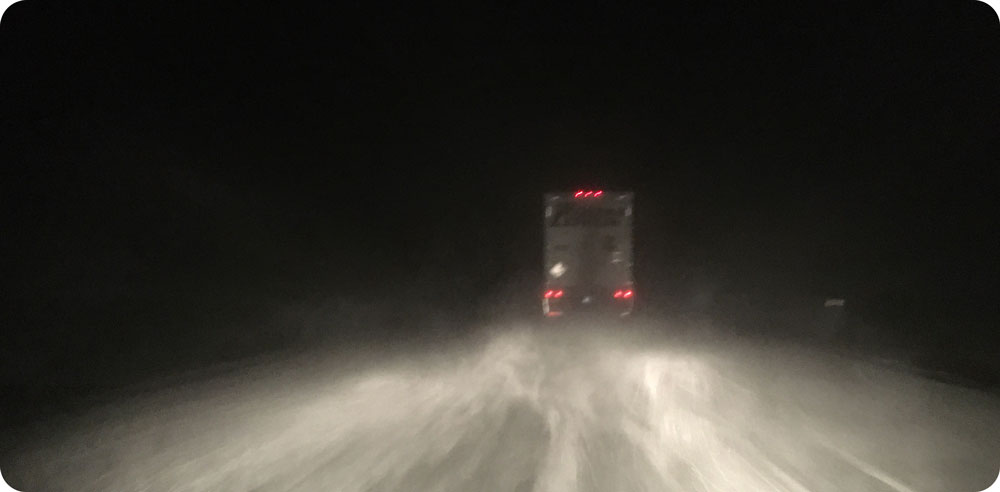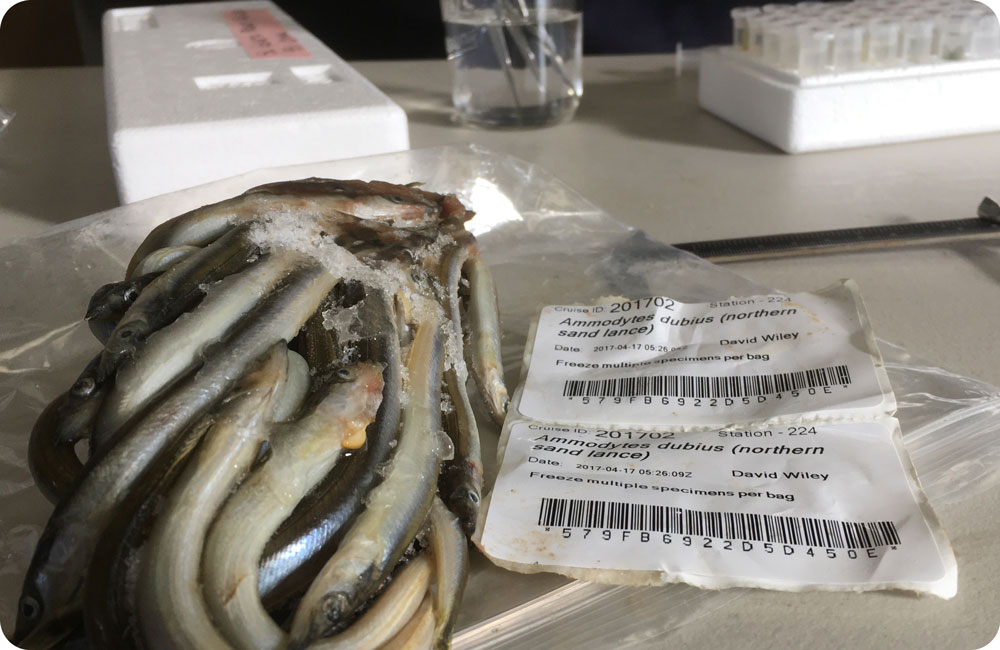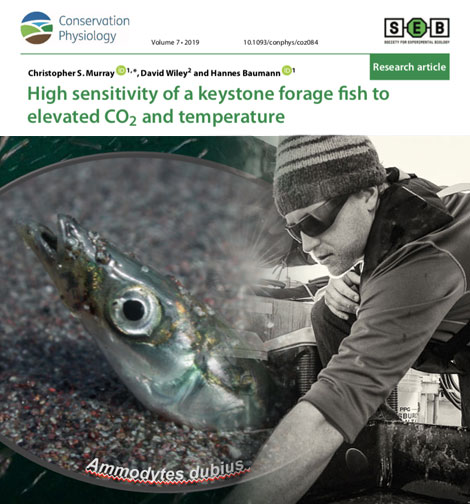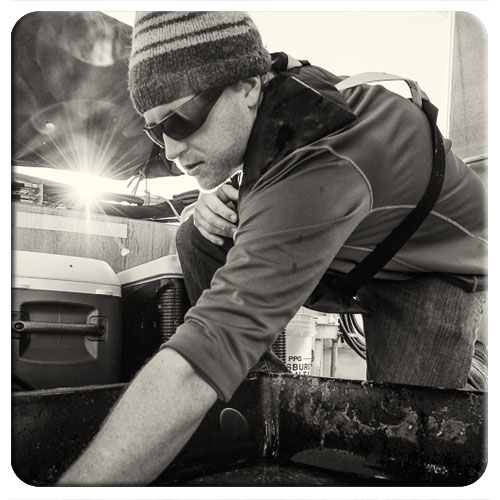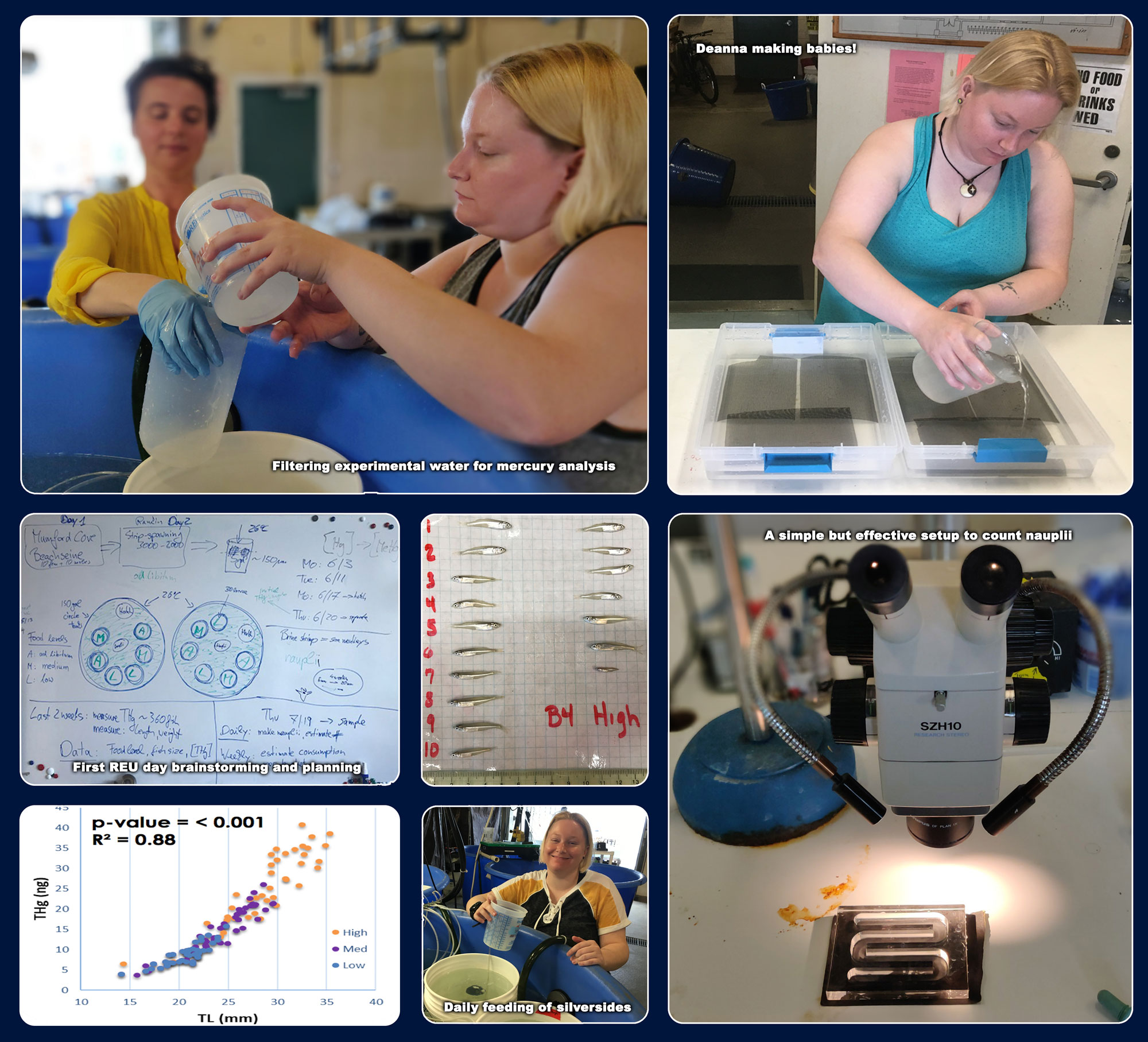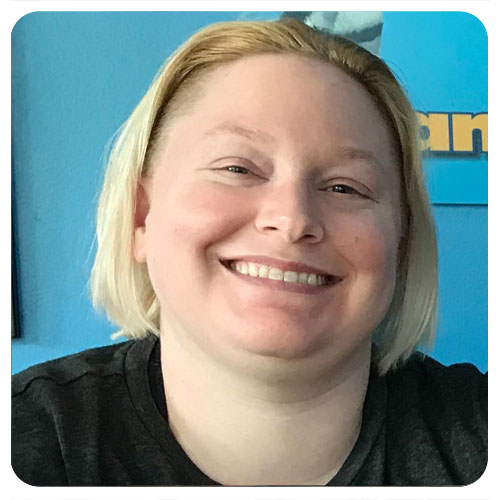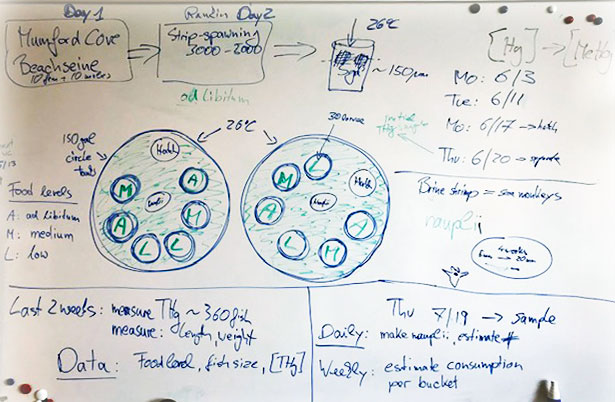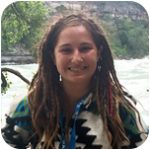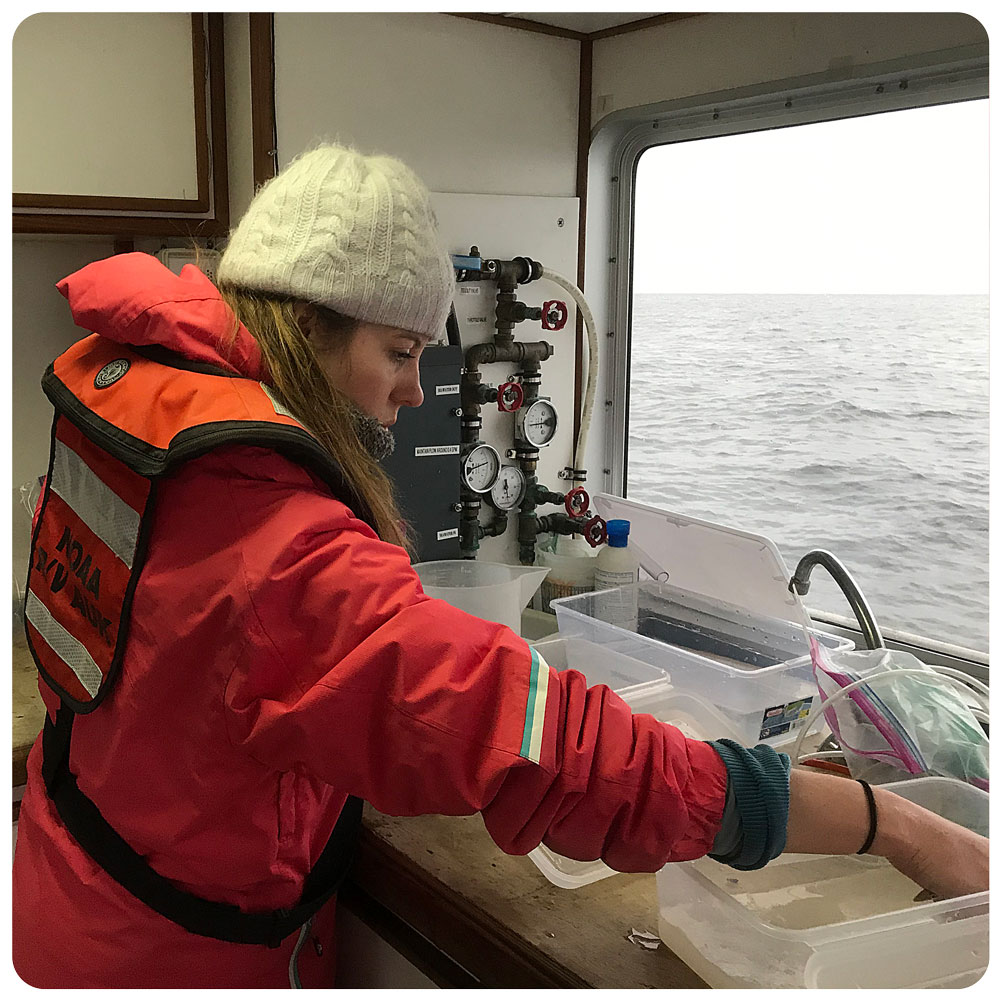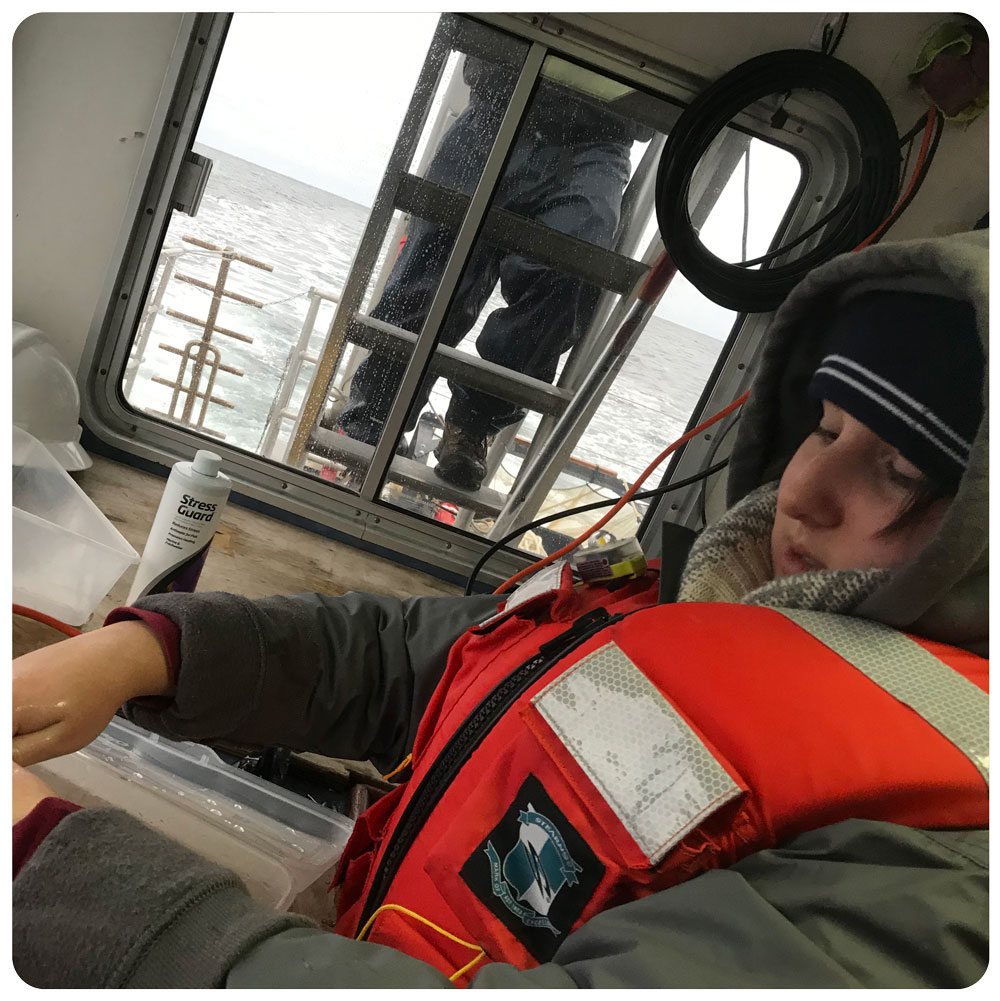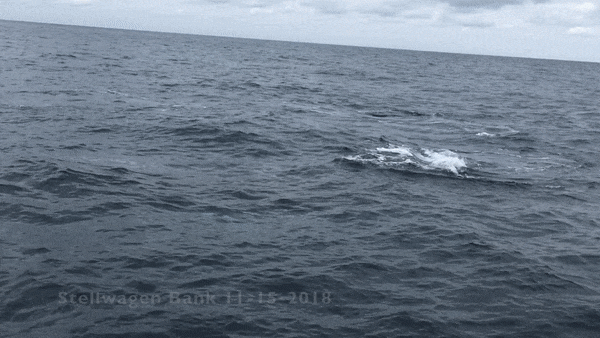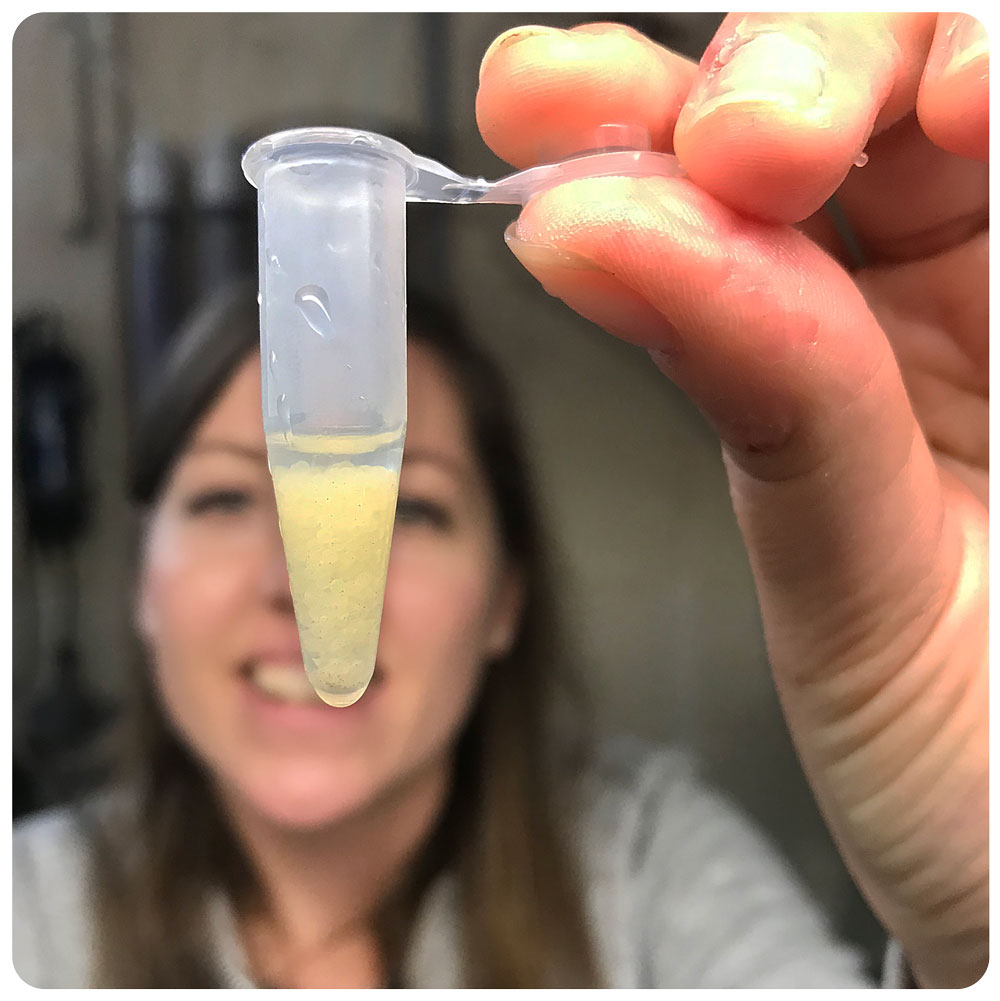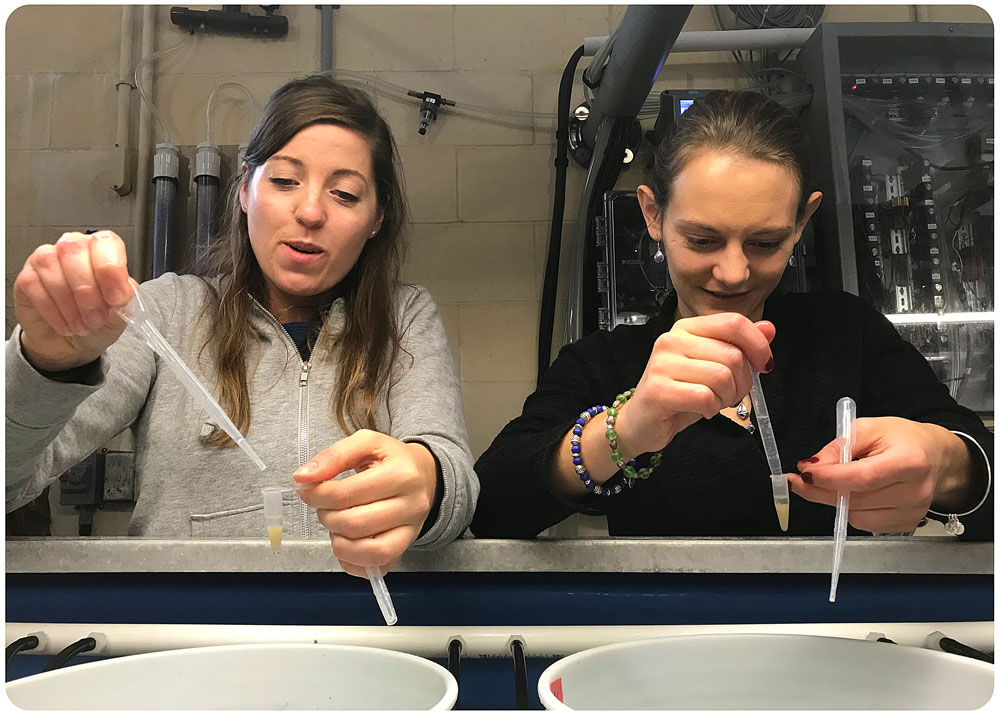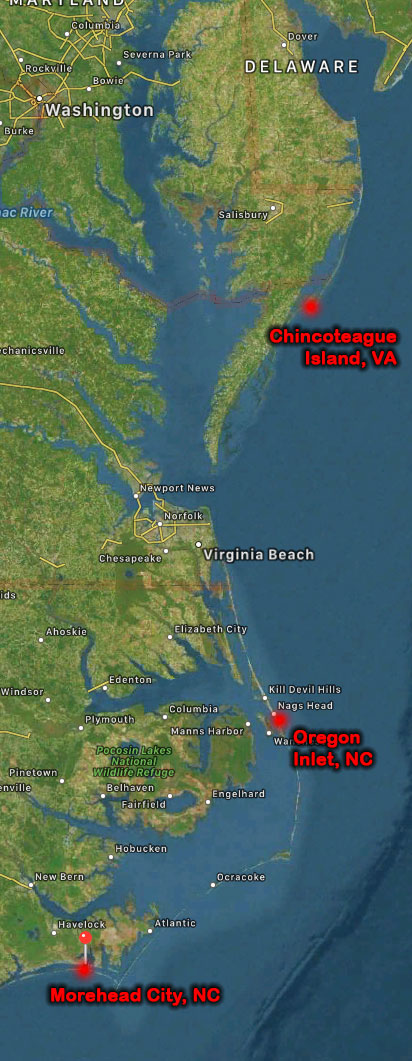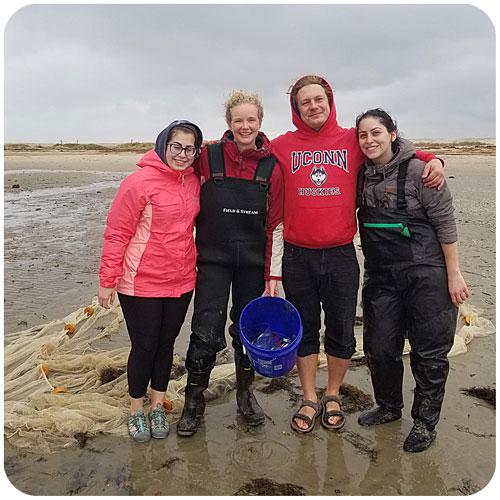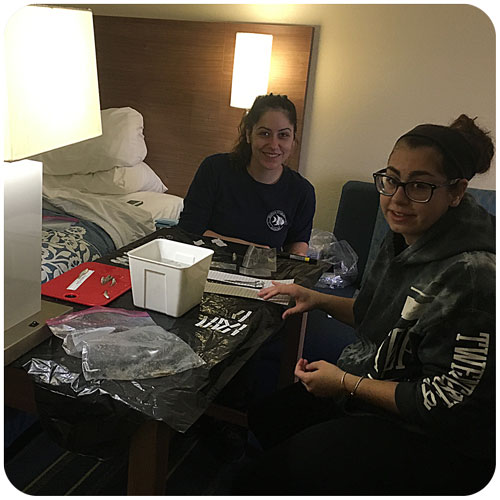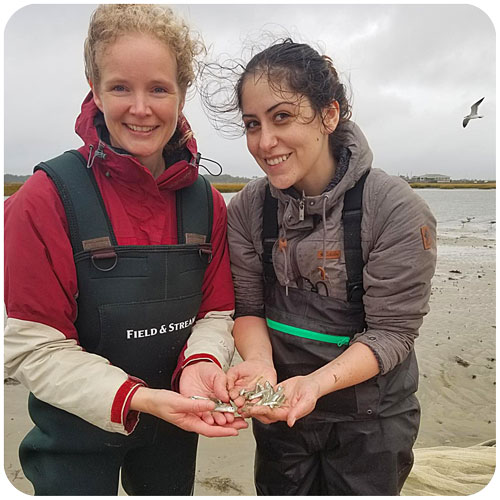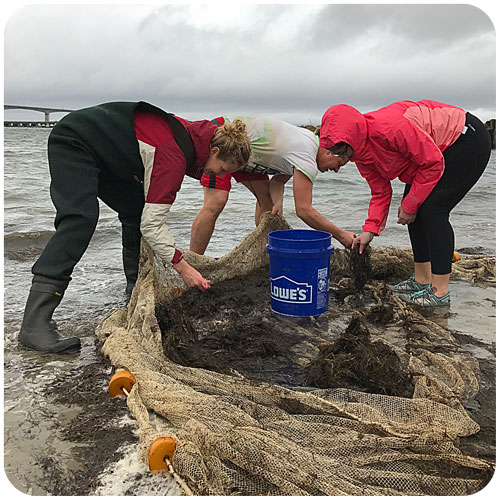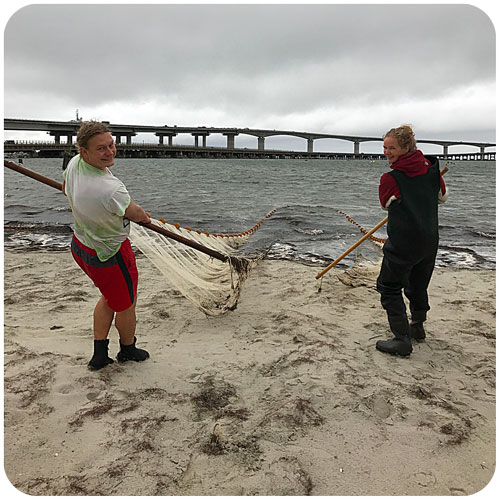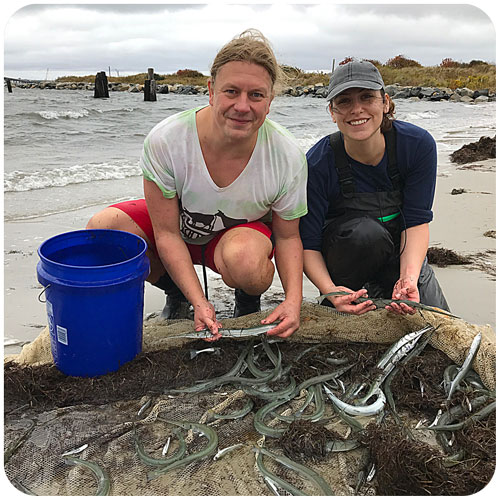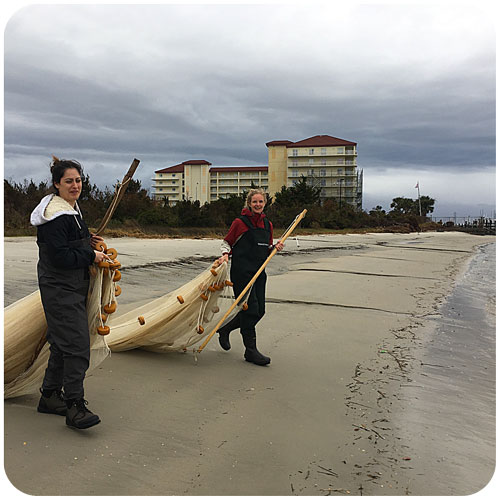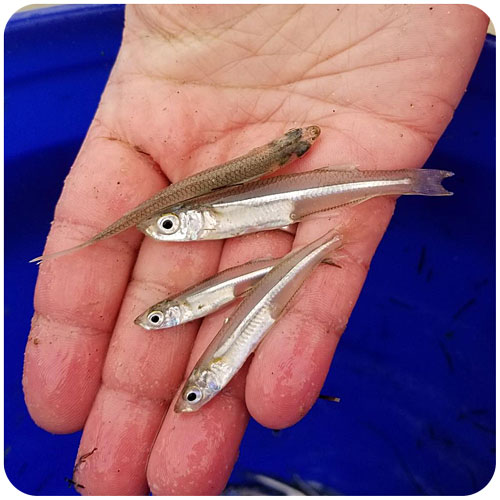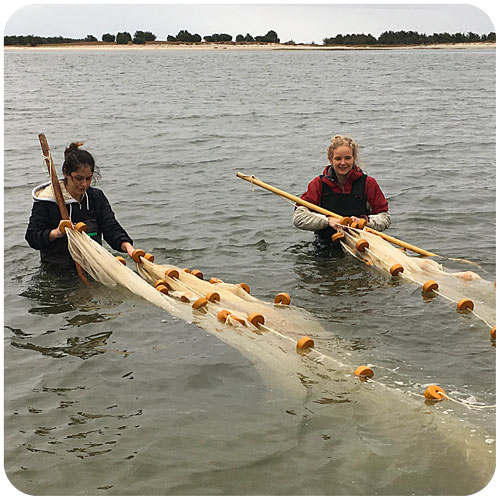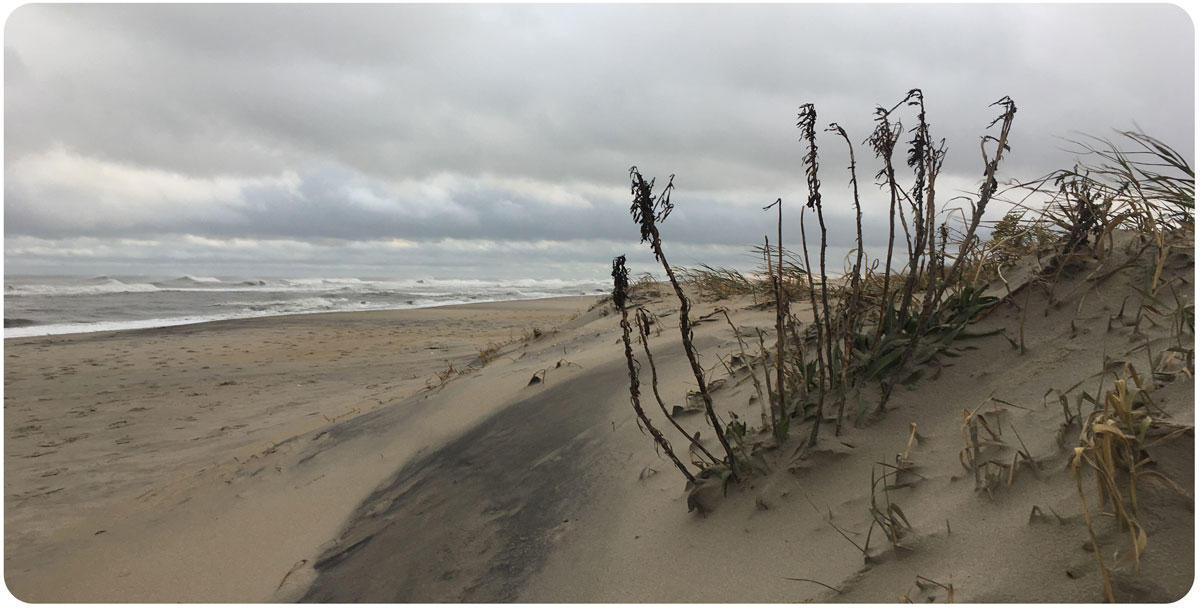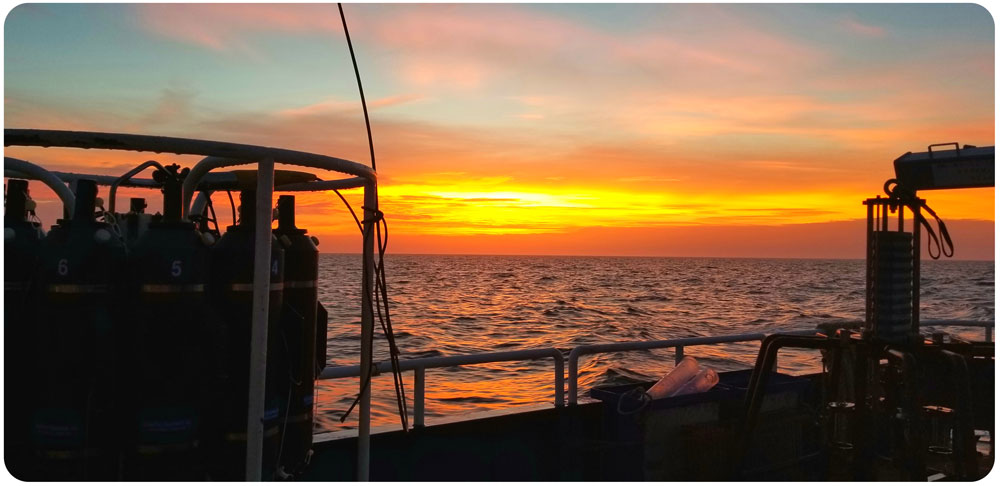18 December 2019. Hannes and Lucas just returned from a spontaneous road trip to visit our good friends and collaborators at the University of Quebec in Rimouski (UQAR), Canada. We drove for over 10 hours (one-way) through snowstorms and icy voids to meet with Prof. Dominique Robert, who had collected sand lance samples from the Gulf of St. Lawrence and from Nova Scotia to be included in our new genomic study on the population connectivity of this species. Hannes gave a talk about our sand lance work and we saw a new institute in a new place, while frantically trying to stay warm amidst the brutal cold. Seeing the St. Lawrence in its icy, majestic beauty was a truly amazing experience.
Afterwards, we drove back through Maine and then repeated the fin-clipping of samples in Scituate at the Stellwagen Bank National Marine Sanctuary office, so we now have almost all samples in hand to start the DNA extraction and sequencing.
We are excited for the next steps!
